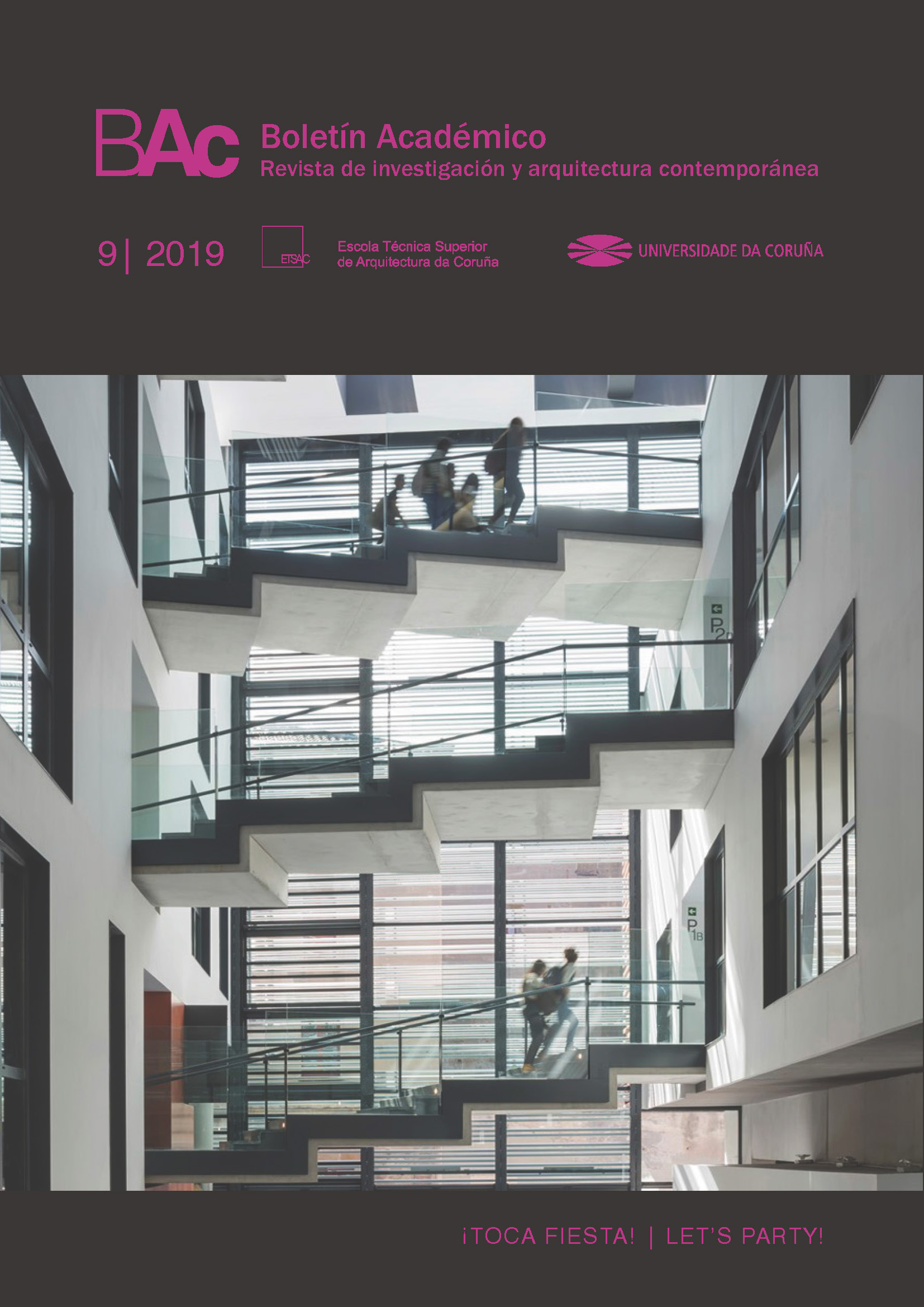A counter-cultural party The domestic space in Andy Warhol and Superstudio
Main Article Content
Abstract
The present text is a way of looking to two spaces: The old New Yorker workshop where Andy Warhol invented the pop between 1963 and 1969, The Factory, and the series of collages drawn by the radical Italian architects Superstudio in 1971 under the title Supersurface, presented afterwards as part of the 1972 MoMa Exhibition: The New Domestic Landscape´s catalogue. The given look is focused on the observation of the objects within both spaces. Pieces of furniture or simply belongings, the objects are understood along the article as the generative aspects of these two spaces, representative both of them of the American and European counter-cultural way of thinking from the sixties to the early seventies.
Keywords:
Downloads
Article Details
References
Ábalos, Iñaki. La Buena Vida. Barcelona: Editorial Gustavo Gili, 2000.
Baudrillard, Jean. El sistema de los objetos. México D.F: Siglo XXI Editores, 1969.
Judt, Tony. Postguerra: Una historia de Europa desde 1945. Madrid: Taurus, 2005.
Natalini, Adolfo. “Arte Visive e Spazio di Coinvolgimento.” Casabella 32, (Julio 1968): 34-35.
Perec, Georges. Les Choses. Une histoire des années soixante. París: René Julliard, 1965.
Quesada, Fernando. Arquitecturas del devenir. Madrid: Ediciones Asiméstricas, 2014.
Reich, Wilhelm. The Sexual Revolution. Nueva York: Reich Infant Trust Fund, 1945.
Smithson, A, and Peter Smithson. “But today we collect ads.” ARK 18, (1956): 49-50.



